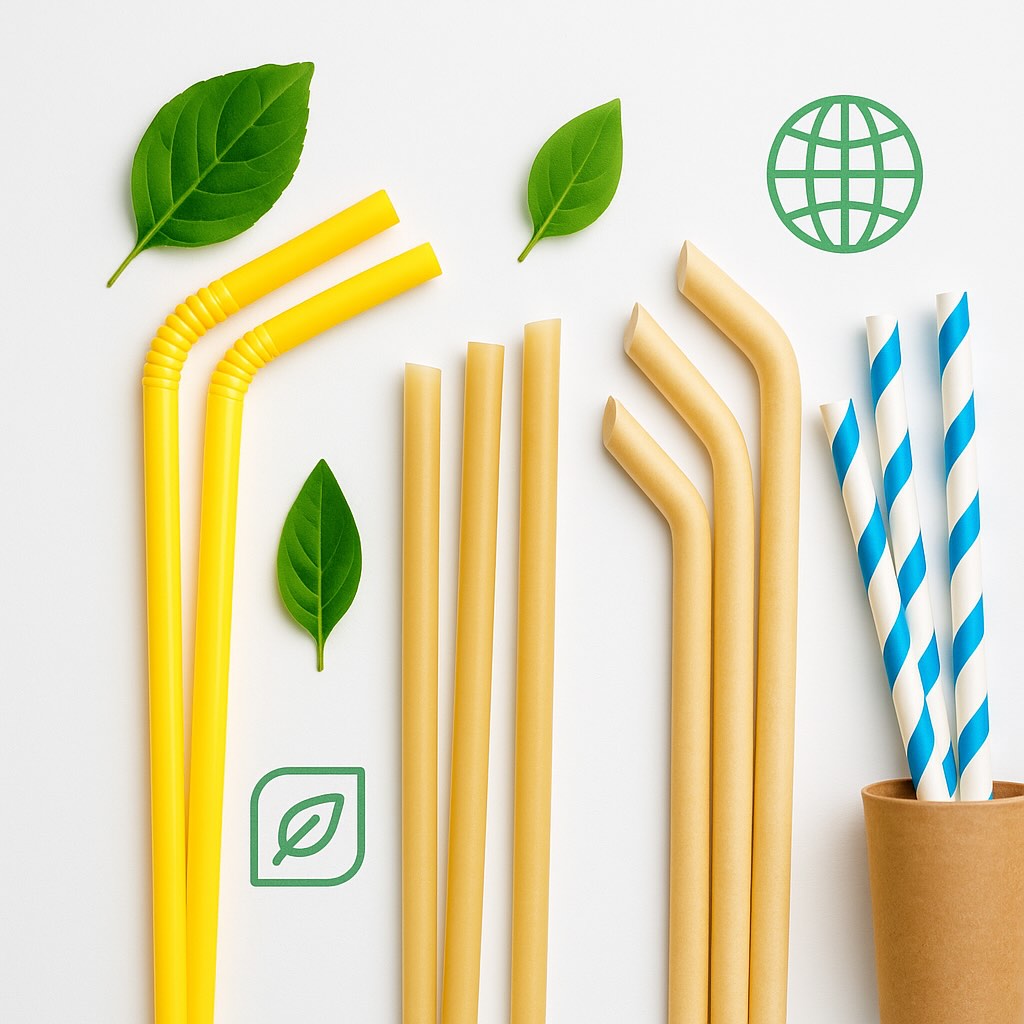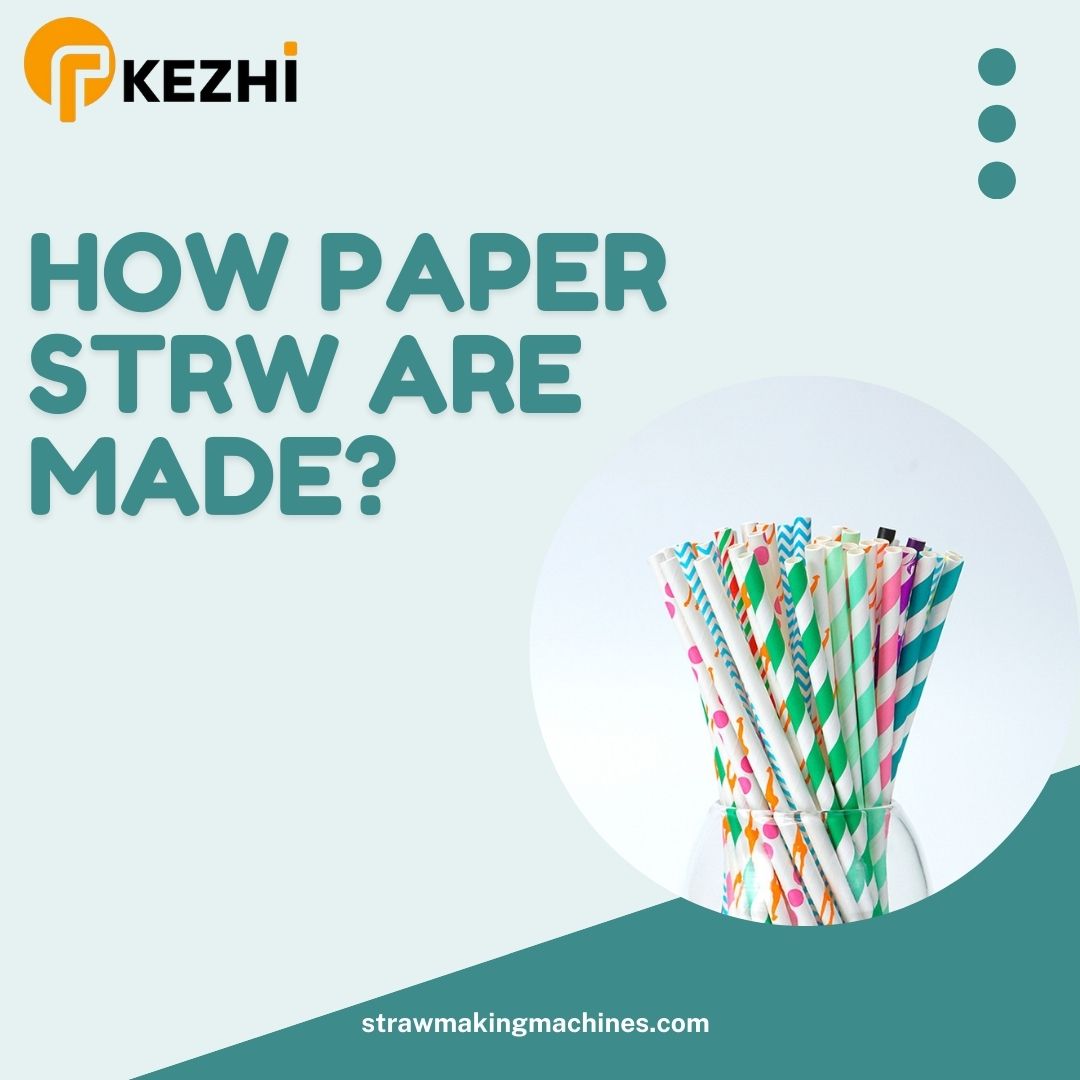The war between PLA and paper straws is heating up. As consumers who want to do right by the planet, we need to find a straw that’s not plastic. But how do we pick the right one? Which of these two options is a better choice to combat plastic pollution while still offering convenience and quality?
The answer is, it depends. PLA straws, which are made from renewable plant materials, are compostable, but some people have a problem with them because they’re only suitable for industrial composting. Paper straws are considered biodegradable, but their production often uses more water and chemicals. It can be confusing, but I’m going to help you clarify things.
You need to understand the environmental impacts of each material before you can choose one. For example, even though people market both PLA and paper straws as being better for the environment, each has its strengths and weaknesses based on how they’re made, used, and disposed of. Let’s take a closer look at each material.

What are the environmental impacts of PLA vs. paper straws?
PLA straws are made from polylactic acid, which comes from renewable sources like corn starch or sugarcane. Because of that, they’re compostable, but they have to go to an industrial composting facility to break down. Paper straws, on the other hand, are made out of wood pulp and are generally viewed as biodegradable, however, they may contain chemicals such as dyes or coatings that could negatively impact their environmental friendliness.
Even though paper straws are biodegradable, they’re often criticized for turning mushy when exposed to liquids and for using more resources (water and chemicals) to make. On the other hand, PLA straws have the downside of not breaking down when put in natural composting conditions, meaning they need industrial conditions to degrade.

How do their manufacturing processes compare?
The tradeoff with PLA straws is that you use less natural resources to make them than with paper straws. However, because the industrial composting facilities that are needed to break down PLA are not as common, it can result in PLA straws sitting in a landfill. Paper straws are 100 percent biodegradable, but they typically take more water and energy to produce, resulting in a bigger carbon footprint.
Both materials have good and bad points when it comes to how they’re made. But which one is better for the planet?
It depends on how you dispose of them and what waste management systems are in place.
What are the challenges with each option?
PLA straws are compostable. However, they will only break down properly in an industrial composting environment, which isn’t available everywhere. When the necessary facilities aren’t present, PLA straws can still be sent to a landfill, where they don’t decompose at the expected rate.
Paper straws are better suited for breaking down naturally, but the fact that they don’t last as long in liquids is a drawback for customers who want something durable that’s also eco-friendly.
Can we rely on PLA or paper straws for long-term sustainability?
In the end, neither one is a perfect solution to the single-use plastic problem. However, both are steps in the right direction to reduce environmental impact. The choice you make will depend on your local waste management infrastructure and the specific needs of your business.
So which one should you choose? If you have composting infrastructure available, PLA straws may be the best option. On the other hand, if you want something that can be more broadly adopted, you’ll find that paper straws are generally more practical.
More related questions
Q: Are PLA straws truly compostable?
A: PLA straws are compostable, but they’re a bit more complicated than you might think when it comes to biodegradability. Here are the key points.
- They require industrial composting. PLA straws need specific conditions only found in industrial composting facilities, such as high temperatures (above 140°F) and specific microbial conditions. Those aren’t conditions you typically find in home compost systems.
- They aren’t available everywhere. Industrial composting facilities aren’t readily available, especially in many parts of the U.S. This makes it very difficult for consumers to properly dispose of PLA straws. When the specialized conditions aren’t there, PLA straws can end up in landfills and the natural environment just like traditional plastics.
- It can create confusion about if they’re good for the planet. Because they need industrial composting, it may mislead people about whether or not PLA straws are better for the environment. While PLA is biodegradable, it only breaks down in controlled industrial conditions—not in backyard composts or in the ocean.
PLA straws are compostable in industrial composting facilities, but their biodegradability is limited due to the availability of those facilities and proper disposal methods.
Q: Why are paper straws less durable than plastic?
A: Paper straws are less durable than plastic straws for a few reasons.
- They’re made out of paper and glue. The fact that paper straws are made out of paper and glue means they soak up moisture and break down over time. Plastic straws, on the other hand, are made out of petroleum-based materials that resist soaking up liquids and hold their shape.
- When you put them in liquid, they break down quickly. Especially when introduced to hot or acidic drinks, paper straws lose their mechanical strength very quickly. Studies show paper straws can lose 70 percent to 90 percent of their strength in under 30 minutes. Plastic straws don’t break down as quickly when put into beverages.
- They won’t last as long. While you can get high-quality paper straws to last a few hours in cold drinks, they typically break down faster than plastic straws, especially when they’re used constantly or with hot liquids. Plastic straws stay durable throughout usage without breaking down significantly.
In short, paper straws are more susceptible to moisture and break down faster than water-resistant plastic alternatives.
Q: What happens to PLA straws if they end up in a landfill?
A: PLA straws don’t break down well in landfills because of the wrong conditions. Here’s why.
- They can take several years to break down. PLA straws are going to take years to break down in a landfill.
- Landfills are not conducive for biodegradation. Landfills are anaerobic environments with very little oxygen, which is needed for PLA to break down. The temperature in landfills is too low for PLA, which requires high temperatures (greater than 140°F) to start degrading.
- They produce methane. PLA straws can produce methane gas when they break down anaerobically, which is a greenhouse gas that contributes to climate change.
- They get mixed in with regular plastics. PLA straws are often combined with traditional plastics during waste processing, which makes it difficult to recycle them and increases the odds that these straws wind up in a landfill instead of being composted.
PLA straws don’t break down well in landfills and can cause environmental challenges similar to conventional plastics.
Q: How do the production processes of PLA and paper straws differ?
A: There are significant differences in the materials used, production techniques, and equipment required to make PLA and paper straws.
PLA Straws Production Process
- Raw material selection. PLA straws are made from renewable resources such as cornstarch and sugarcane.
- Extraction and fermentation. Starch is extracted and fermented to turn it into lactic acid.
- Polymerization. Lactic acid is polymerized to create PLA (polylactic acid).
- Pellet formation. The PLA resin is processed into pellets.
- Extrusion. The pellets are melted and extruded in the shape of straws using an extruder machine.
- Cooling and cutting. The extruded straws are cooled, solidified, and cut to length.
Paper Straws Production Process
- Material preparation. Paper is the primary material used.
- Rolling process. Paper sheets are rolled around a cylindrical mold with glue applied between the layers to bond them together.
- Shaping and drying. The rolled paper tubes are dried to remove excess moisture.
- Cutting to lengths. After drying, the tubes are cut to straw lengths.
Key Differences:
- Materials Used: PLA uses bioplastics made from renewable resources like corn starch, while paper straws are made from cellulose-based paper.
- Manufacturing Techniques Used: The production of PLA involves chemical processes such as fermentation and polymerization followed by extrusion. Making paper straws is a simpler mechanical process that involves rolling and gluing.
- Equipment Used: PLA straws require extruders while paper straws are made using rolling machines.
The production of PLA straws requires sophisticated machinery because of the chemical transformations involved; paper straws are made through a much simpler mechanical assembly.
Q: Can paper straws be recycled?
A: Paper straws can be recycled, but there are some hurdles.
- They’re made from paper and glue. Paper straws are made from paper and glue. Some paper straws, however, have coatings or glues that are not recyclable.
- They can get contaminated from food. Paper straws will pick up contamination from food and are less likely to be accepted at recycling facilities.
- They’re small and difficult to sort. Paper straws are small and difficult to sort at recycling facilities. Because of that, they may get missed or thrown out during the processing.
- Local recycling policies vary. Different local authorities have different policies about whether or not to recycle paper straws. Some may allow them to go in regular recycling. Others may require them to be thrown in the trash.
While paper straws are recyclable because they’re made from paper, contamination and sorting issues make them less recyclable in practice. Composting is a better way to dispose of paper straws.
Q: Are there more sustainable alternatives to PLA and paper straws?
A: Yes, there are many alternatives to PLA and paper straws that are more sustainable.
Bamboo Straws
- Renewable bamboo grows back really fast and doesn’t need much water or pesticides.
- DurableYou can reuse them. They can withstand heat and are long-lasting.
- BiodegradableCompletely biodegradable, leaving no microplastics behind.
Sugarcane Straws
- Made from a byproduct made from sugarcane waste that would normally be disposed of.
- CompostableCan go in your home compost, not needing industrial composting facilities.
- Durable can be used for hot and cold drinks.
Wheat Straws
- Made from a byproduct made from the stems of wheat that would normally be thrown away after harvesting the grains.
- CompostableCan be composted at home.
Metal (Stainless Steel) Straws
- ReusableWhile they are not biodegradable, they’re durable and fully recyclable. They keep waste out of landfills long term.
Glass Straws
- DurableNon-toxic and dishwasher safe. Can be reused multiple times.
Silicone Straws
- Flexible & DurableCan be usable for a long time. They’re flexible and dishwasher-safe. Some are recyclable.
Seaweed-based Edible Straws (e.g., LOLIWARE)
- Non-GMO and Food-Grade Both are dissolvable in water and will not leave residue or microplastics behind.
Pasta/Rice/Tapioca-based Edible Straws (e.g., Stroodles)
- Biodegradables do not contain chemical additives and can be eaten as snacks.
Sulapac Straws
- Made from a combination of wood chips and plant-based binders. They biodegrade naturally with no microplastics.
These alternatives are helping to reduce plastic waste by being reusable or naturally decomposing without contributing to pollution like traditional plastic straws.
Conclusión
Whether PLA or paper straws is a better eco-friendly option depends on what’s important to you. Either way, both provide alternatives to plastic straws that are good for the planet. The choice you make will be dictated by local waste management systems and what it is you’re trying to reduce (waste versus chemical impact).






